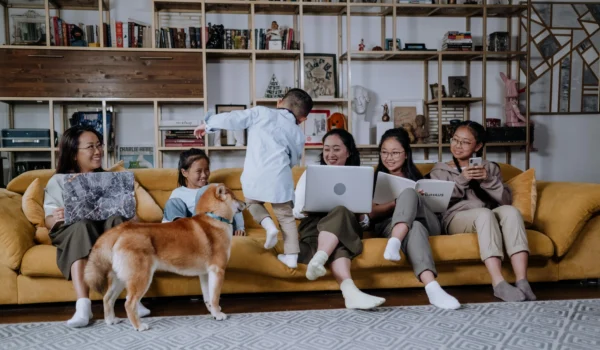Introduction
Minimalism, a philosophy emphasizing simplicity and focusing on the essentials, has profoundly influenced various aspects of life, including dog training. This approach can lead to more effective, efficient, and meaningful interactions between owners and pets. In this blog, we will explore 10 ways minimalism has shaped dog training techniques, enhancing the learning experience for both dogs and their owners. We’ll also touch on how concepts from an animal communication workshop can integrate with minimalist training methods to deepen the bond between you and your furry friend.
1. Clarity in Commands
Minimalism in dog training means using clear, concise commands instead of overwhelming the dog with lengthy instructions or multiple cues. Minimalism advocates for simple, consistent commands that are easy for the dog to understand and follow, leading to quicker and more effective learning.
2. Reducing Training Clutter
Just as minimalism encourages decluttering physical spaces, it applies to dog training environments. By removing unnecessary distractions, trainers can create a focused setting where dogs can learn without confusion or stress, making the training process more straightforward and effective.
3. Focused Training Sessions
Minimalism promotes quality over quantity. Short, focused training sessions are more beneficial than longer, less structured ones. This approach ensures the dog remains engaged and doesn’t become overwhelmed or exhausted, leading to more productive learning outcomes.
4. Minimalist Training Tools
Instead of relying on various gadgets and tools, minimalist dog training often requires only a few essential items. This not only makes training more affordable and accessible but also teaches the dog to respond to the trainer’s commands without becoming dependent on external devices.
5. Streamlining Training Techniques
Minimalism encourages stripping down to the basics, and in dog training, this means focusing on effective and easy-to-implement fundamental techniques. By concentrating on core training methods, trainers can achieve better results and build a strong foundation for advanced learning.
6. Enhancing Dog-Owner Communication
Minimalism can improve communication between the dog and the owner. By simplifying interactions, owners can better understand their dog’s needs and behaviors, leading to a more harmonious relationship. Participating in an animal communication workshop can further enhance this understanding, providing deeper insights into the dog’s perspective.
7. Prioritizing Essential Behaviors
In minimalist dog training, emphasis is placed on teaching essential behaviors crucial for the dog’s safety and well-being. By focusing on these key skills, owners ensure that their dogs learn vital commands to prevent dangerous situations and improve their quality of life.
8. Reducing Stress and Anxiety
Adopting a minimalist approach to training makes the process less stressful for the dog and the owner. Minimalism’s emphasis on simplicity and essentials can create a calm and positive learning environment, reducing anxiety and enhancing the dog’s learning ability.
9. Encouraging Consistency
Consistency is a cornerstone of minimalism and is equally important in dog training. A consistent approach, with regular routines and predictable outcomes, helps dogs understand what is expected of them, leading to faster and more reliable learning.
10. Fostering a Stronger Bond
Ultimately, minimalism in dog training fosters a stronger, more trusting relationship between dogs and their owners. Owners can spend more time with their pets by focusing on the essentials and eliminating distractions, leading to a deeper bond and mutual understanding.
Conclusion
Minimalism profoundly impacts dog training, offering a straightforward, efficient, and effective approach to developing a well-behaved and responsive pet. By embracing simplicity and focusing on the essentials, trainers can enhance the learning experience, reduce stress, and build a stronger relationship with their dogs. Integrating minimalist principles with insights from an animal communication workshop can deepen the bond between owners and their pets, leading to a more fulfilling and harmonious life. In the world of dog training, sometimes less truly is more.


